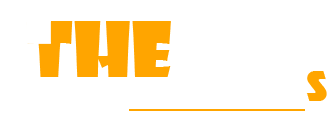This is a unique characteristic among all medical devices, which rely on a range of software applications for their operation. A variety of healthcare software development companies provide a highly personalized approach to meet the requirements and objectives of both healthcare facilities and patients.
Electronic Health Records (EHRs)consolidate patient information into a central repository so that this information can be used to gain a more comprehensive understanding and make an accurate diagnosis.Telemedicine facilitates sharing medical consulations and information through an electronic connection, sparing patients from the expense and effort of travelling to medical centers. This way, patients with less serious medical conditions can also get consultation from specialists.
Electronic Health Records (EHRs)
The fact that a doctor can trace a patient’s data throughout time reduces the risk of errors due to lost or illegible paper records. All this leads to better quality of care, since physicians can spend less time on data entry and more time with their patients.
EHRs might even incorporate a decision-support system, supplying the physician with the most current clinical guidelines, research studies and treatment protocols. The care will be more in line with evidence-based medicine, increasing patients’ chances of benefitting from optimal treatment.
But EHR software is complicated and difficult to implement – for example, it can be hard for different software systems to smoothly exchange patient data, a process known as interoperability; and it can be tough for a healthcare organisation to fully see how they could benefit from using an EHR, when care is so diverse across all of the subspecialties, with very different information needs.
Patient Portals
Patients are given access to their own portal, where they can send email to their healthcare provider. Doing so frees the time of the clinician who no longer needs to be caught up in the rigmarole of answering the simple, non-urgent questions by phone, leaving the remaining time with the clinician available to the patients most deserving of healthcare access and attention.
Other studies found patient portals have potential to increase patients’ ability to access their EHR information and to interact with their care teams outside of the clinic setting. However, results are preliminary: more research is needed.
In the meantime, every healthcare organisation needs a portal (sometimes called a PHR, personal health record) for patients. A portal should be ‘consumer grade’ – easy to use and clear across all kinds of devices. That ensures that patients can make use of such resources and find them useful. Another necessity is ensuring that alternative methods of communication – long-distance phone and even paper – are available for those patients who aren’t comfortable with technology or those who don’t have access to the internet.
Medical Imaging
Medical imaging is the non-invasive study of the interior of the body, which permits diagnosis of disease and trauma to various organs and anatomic structures. Imaging used in this context refers to x-ray, computed tomography (CT), and magnetic resonance imaging (MRI), as well as to nuclear medicine functional imaging techniques that reveal biochemical function, such as positron emission tomography (PET).
Medical image analysis, as an example, is a formidably complex task of interpretation that can in turn be helped by speech recognition, natural language processing, guided structured reporting and ontologies that can annotate abnormalities in the image, and then help the physician to curate them and demarcate as part of the diagnostic task at hand.
Generative AI is rapidly evolving and is a powerful tool that can be used to improve medical imaging by enhancing reconstructions, segmentations and disease detection. But this powerful tool can pose a threat to privacy and security as it requires access to highly sensitive patient data. Thus, mindful deployment and use are imperative. For example, to help identify stroke patients in hospitals and treating physicians, a system has recently been conceived to ‘mine’ health institutions’ databases and alert the clinicians and the stroke attendings so that the patients can be cared for sooner and possibly save lives. The resulting system can potentially reduce the time-to-diagnosis and treatment, and potentially optimise downstream workflow.
Artificial Intelligence (AI)
With healthcare software companies creating products that incorporate AI, there is greater opportunity for Americans who hear about these technologies to say they would be comfortable with them for medical tasks like skin cancer screening, pain management and cochlear implants. But they also raise a number of other concerns that may prevent the promise of artificial intelligence from becoming reality.
Perhaps most prominent are fears that AI will lead to increased racial and ethnic bias in care, or that it will make it more difficult to identify new treatments for some patients, or otherwise be harmful in some way. According to Elena Martín Balaguer of the University of Mainz in Germany writing in PLOS Biology, ‘Most of these expectations can be alleviated,’ especially in the hand of healthcare software vendors who have promised to address the fact that their applications of AI would be ‘FAVES for all’, by which they mean ‘Fair, Appropriate, Valid, Effective and Safe’.
Machine learning enables a physician’s interaction with complex imaging data to be faster and more accurate than ever before. For example, PhysIQ’s Digital Medicine Suite uses AI to help interpret patients’ heart, lung and breathing data, thus supporting physicians in areas such as arrhythmia and COPD (chronic obstructive pulmonary disease) screening. AI could also enhance the field of endoscopic interventions, such as lung biopsies. Johnson Johnson MedTech’s Monarch Platform helps physicians see tumour lesions during biopsies by highlighting parts of the lungs that appear unhealthy. AI is doing this by analysing and flagging real-time microenvironmental changes that are undetectable to a vulnerable lung during biopsies. Taking this a step further, the Monarch platform also helps physicians visualise and navigate to an area in the lung where hypothetical lung tumours might be hiding. Algorithms can help physicians identify clusters of microenvironmental changes that correlate to the shape, location and area of a lung tumour. Once a potential area has been identified, the physician guides the needle into the suspicious lung spot, thereby increasing the chances of a successful biopsy. This Monarch platform gained the European CE mark – a regulatory label used to approve medical devices and other health-related products in the European internal market – for endobronchial ultrasound (eEBUS)-guided lung biopsies in April 2022. This means it was designed to complement – not replace – bronchoscopes. The new digital device currently helps physicians identify hypothetical lung tumours more accurately, and over time this usefulness should improve.

